Cross-platform mobile development with Expo
👋 Hi, this is Gergely with a subscriber-only issue of the Pragmatic Engineer Newsletter. In every issue, I cover challenges at Big Tech and startups through the lens of engineering managers and senior engineers. If you’ve been forwarded this email, you can subscribe here. Cross-platform mobile development with ExpoExpo has quietly become one of the most popular tools for cross-platform development. Why is this, and how does Expo work? A deepdive with the Expo engineering teamReact Native and Flutter are by far the most popular cross-platform development technologies, as previously covered in the deepdive, Cross-platform mobile development. React Native (made by Meta) seems more popular in the US and UK, and at mid to large-sized companies, while Flutter (made by Google) powers more apps overall, globally. But there’s also one other company that consistently comes up in talk about cross-platform mobile technologies: Expo. When the Bluesky team shared their cross-platform tech stack, they mentioned that it was React Native and Expo. Meanwhile, the React Native “getting started” guide strongly advises starting development with Expo, and calls it “a production-grade React Native Framework.” So, what is Expo and why is it so important for cross-platform React Native development? A year ago, I travelled to California and visited Expo’s offices in Palo Alto, meeting with the team to find out more; a few months later, I got back in touch for extra details on how Expo works, and to learn what makes it popular. This deepdive covers:
This deepdive features contributions from Expo’s co-founder and CEO Charlie Cheever, co-founder and CTO James Ide, and engineering manager Brent Vatne. Their input is appreciated! As with every deepdive we publish, The Pragmatic Engineer has no commercial affiliation with the company featured, and was not paid to write about them in this article. More in our ethics statement. The bottom of this article could be cut off in some email clients. Read the full article uninterrupted, online. 1. Why is Expo popular?Expo is a startup based in Palo Alto, California, employing 32 people, 29 of whom are developers – a surprisingly high ratio of 90%. The company lists employees on its about page. The ratio at larger software companies like Meta, Google, or Microsoft is rarely above 30-40%, due to the presence of other teams like sales, support, and many other support functions. Today, the open source Expo framework is used in more than 1 million public Github repositories, and has more than 800,000 downloads per week. The project is very active: more than 1,300 developers contribute in total, and there were more than 50,000 members of the Discord channel at time of publication. Expo may be the biggest reason why React Native became as popular as Flutter. These days, when I hear a company develops with React Native, it almost always follows that they use Expo, too. This is because it has developer tools which make even the best cross-platform framework much less clunky to develop on for the iOS and Android native platforms. For Flutter, similarly solid developer tooling which Google built and maintained has long been a differentiator; the search giant built sophisticated tools to debug, profile and diagnose Flutter applications. However, getting started with Flutter still requires a multi-step developer environment setup, while shipping iOS and Android apps is a pretty involved process, compared with the simplest ways of getting started with React Native and Expo: Just open the website snack.expo.dev. This is the site called “Expo Snack,” where you can immediately start to do live editing on a React Native application that runs on an Android emulator, an iOS emulator, or a web view:
You can also run the app on your mobile device by scanning a QR code and installing the Expo Go app. I also did this – and the app live updated as I made changes. With such little effort required, this felt magical. Being able to live edit an app with zero development tooling feels magical, even in 2025. Developing with no tools installed locally is not possible when doing native iOS or Android development. Google’s cloud development environment, Project IDX, comes close, but it’s not as snappy. Meanwhile, Expo Snack is just one of many developer-first features produced by Expo’s small team, that’s on a par with Apple and Google tools. More below on Expo’s development tooling in the sections, “What is Expo?” and “Shipping to production.” Why do companies move to Expo? We asked the Bluesky engineering team, who are heavy React Native users – and whom we previously covered in the deepdive Inside Bluesky’s engineering culture. Here’s what Paul Frazee – the dev who built the initial Bluesky’s iOS, Android, and web applications, using a single codebase – told us:
2. HistoryAs previously mentioned, Expo was founded out of frustration at how long it takes to build a mobile app. In 2012, Charlie Cheever was CTO at Quora and working on an iOS and Android app for the Q&A site. Being a hands-on developer with extensive web experience (he was an early engineer at Facebook), he assumed it would take at most a few weeks to build each native app. However, it actually took months per platform, and included terrible developer experiences on both iOS and Android; at least, compared to the web. From this came the idea for Expo. Charlie sums up the objective:
He teamed up with James Ide and they started experimenting with ways of using web technologies to build mobile apps, eventually ending up with a framework that wrapped mobile-native components; basically something pretty similar to React Native. They were about to launch when React Native was released, which was created and used by Meta, with around 40 people working on it. In contrast, the as yet-unreleased Expo framework was developed by two people. Rather than compete with React Native, Expo decided to embrace it. Charlie and James understood that coding an app was just one of the many parts of shipping a cross-platform app. Every developer using React Native still had other problem areas to solve:
“Exponent” was the first product the team shipped; a React Native development tool that sat a level above React Native. The team announced it in 2015 at a React conference called React Rally. It took care of things like:
The Exponent toolset kept evolving, and two years later in 2017, the name changed to Expo because it’s easier to say and remember. From 2017, Expo kept shipping new, major releases to Expo SDK several times per year. Back then, Expo’s SDK was on version 21; today, it’s on version 52. The company maintains a changelog listing notable changes, and a detailed changelog. 3. React Native vs a React Native FrameworkExpo is a framework and set of tools that uses React Native (RN), and simplifies the development of RN applications. It also happens to be the only React Native Framework considered as production-grade, currently. But what is a “React Native Framework?” As React Native builds on top of React, let’s see how things work in the React world. React vs React FrameworksReact: providing core capabilities. React is a JavaScript library for building web user interfaces.
React takes care of many things, like:
React Frameworks: providing production-grade capabilities. You can build web applications only using React. However, the more complex and larger an application gets, the more additional features must be built, like routing between pages, code-splitting between several files, fetching data, moving some rendering to the server, and so on. Here’s what the React team says about frameworks in the getting started guide:
The React team lists three “production-grade” frameworks, defined by:
React Frameworks which meet these conditions, and are recommended by the React team:
React is funded by Meta, but React frameworks are funded by other companies. Vercel and Netlify are hosting providers and fund the frameworks as it helps drive adoption of their services. Remix was acquired by Shopify, and is being merged into React Router. React Native vs a React Native FrameworkConsidering the differences between React and React Frameworks, it’s likely to be unsurprising that React Native has a similar concept split between “core” React Native features, and production-ready features which frameworks should provide. React Native offers core APIs and capabilities to build native apps. It’s a framework that allows using the React programming paradigm to build native iOS and Android applications, which offers:
React Native frameworks provide production-grade capability: The React Native team follows an RFC approach for discussions and proposals. In 2024, the team opened an RFC for React Native frameworks and arrived at the following definition of a RN framework:
Expo: the only production-grade open source RN framework available today. At the time of publishing, the React Native team only recommends Expo as a production-grade framework. This is a very strong recommendation, given that the same team also writes this about React Native frameworks:
So how did Meta end up recommending Expo? Charlie explains:
Collaboration with Meta started early, as Brent Vatne, engineering manager at Expo, recalls:
Expo seems to fill a gap in a way that helps Meta, by making React Native more accessible for external developers. Charlie:
React Native by itself does not support tools necessary to deploy and scale an app that is production-grade. Meta has its own production-grade React Native framework, which is tailored to its needs and its vast number of custom internal tools. So it’s a win for Meta to have a company building a more generic production framework to build React Native apps with. 4. Expo: collection of developer toolsExpo makes it easier to build production-grade React Native apps by providing additional abstractions (like routing) and tools (like a command line) to make building apps faster. It brings these added features to React Native development, built on top of React Native:... Subscribe to The Pragmatic Engineer to unlock the rest.Become a paying subscriber of The Pragmatic Engineer to get access to this post and other subscriber-only content. A subscription gets you:
|

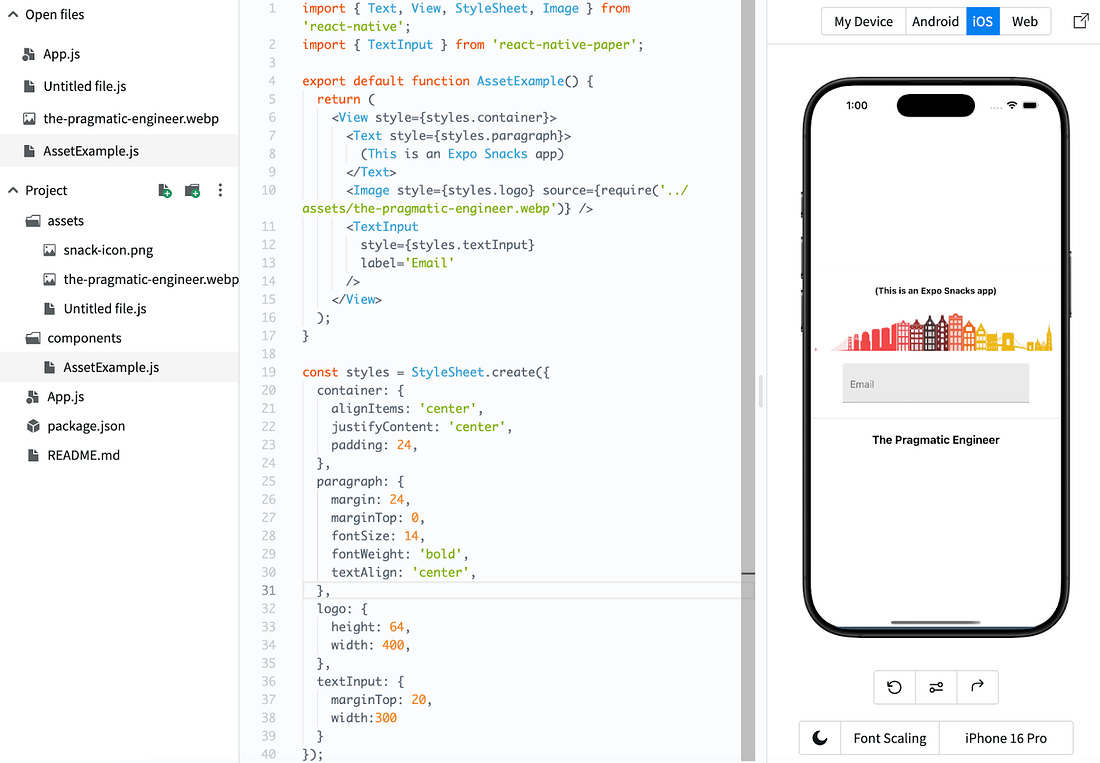
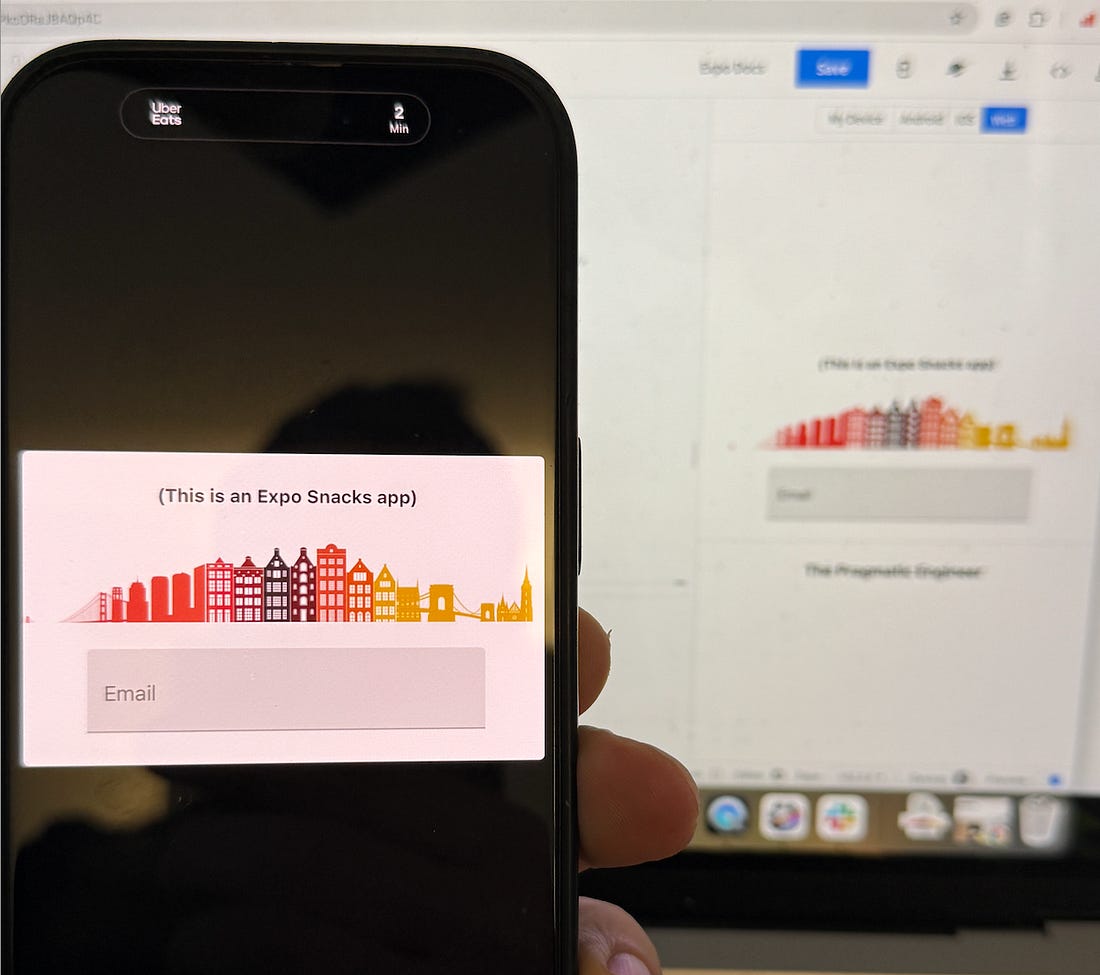
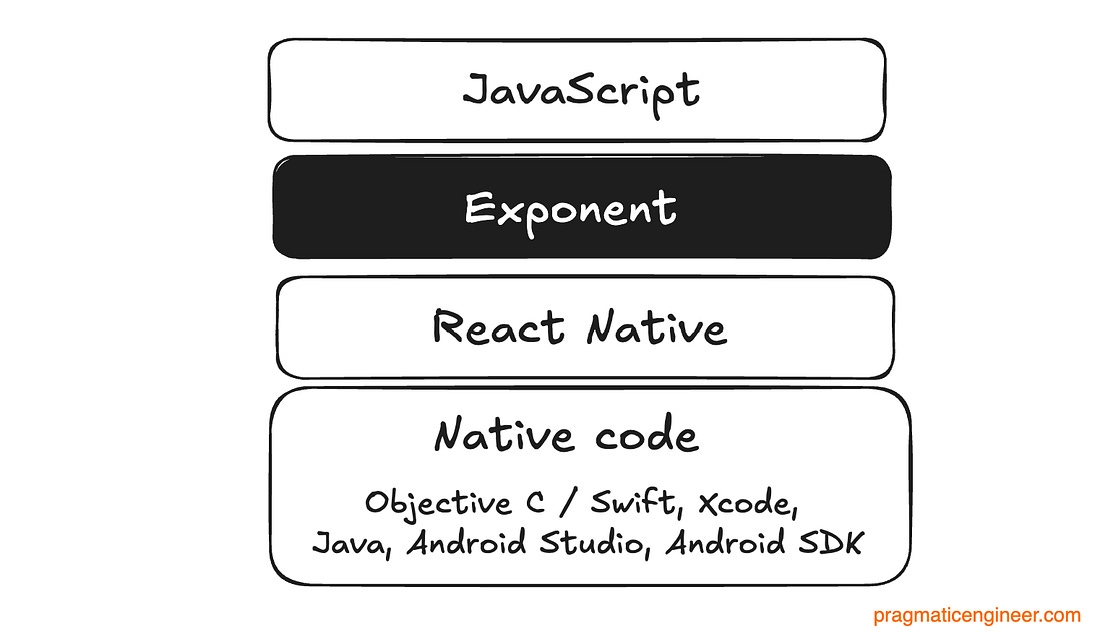
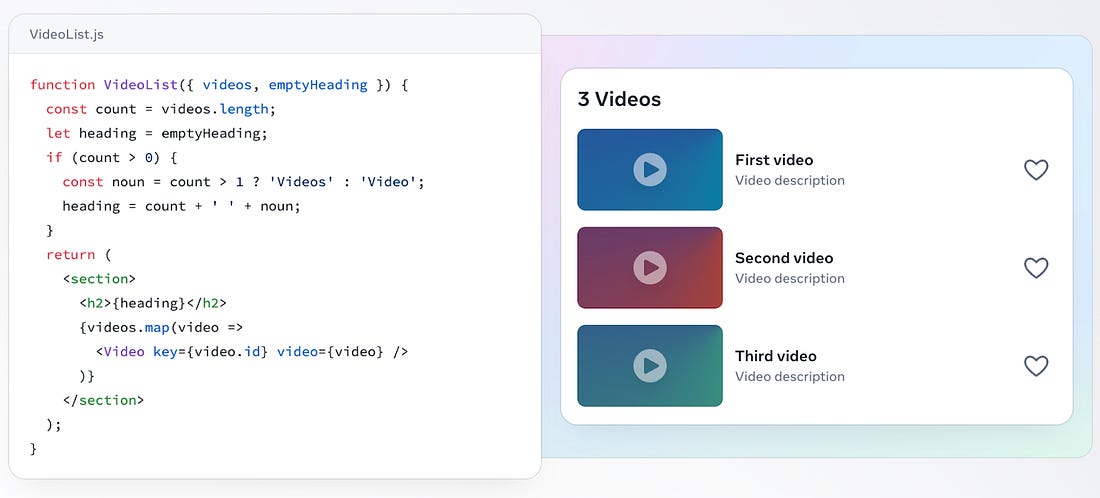
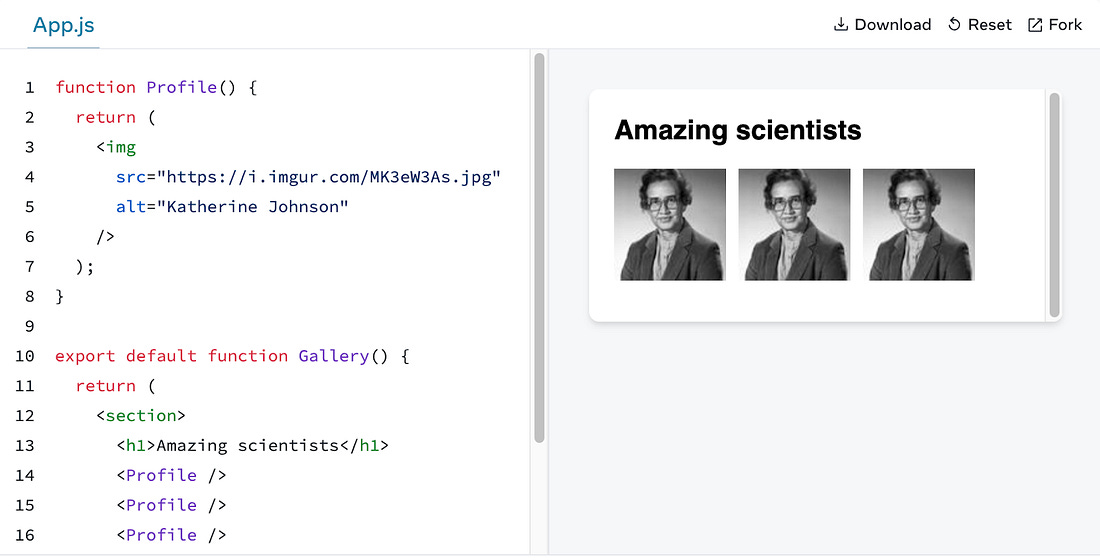
Comments
Post a Comment